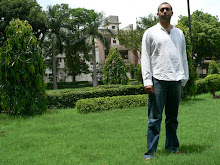Standing next to France’s President Sarkozy, the Indian prime minister Manmohan Singh today made a heartfelt plea over the spread of anti-Christian violence in India.
The sight of Hindu mobs smashing churches and prayer halls while Christians in the country are killed or left cowering under tarpaulin sheets in refugee camps is, as Dr Singh rightly described, a “national shame”.
There are calls from within the ruling Congress party, which relies on the votes of Christians and Muslims in India, to ban Hindu extremist organisations such as the Bajrang Dal, who use force when the force of argument fails.
There’s been bloodshed on both sides. One Christian priest was “cut to pieces” in front of his wife. A Hindu priest was shot dead for campaigning against religious conversions.
The violence, which has left nearly two-dozen dead, has spread across six states. Even after the Pope intervened, the Roman Catholic archbishop of one of the worst affected areas in eastern India said the situation was “out of control”.
What lies behind this violence is nothing less than a struggle for the soul of India. Religion is deeply rooted in this country of one billion. The divine was fundamental in the creation of post-independence India. Unlike Europe, in India the Gods will not disappear in a blaze of rational thinking.
But views of God led to a schism in Indian nationalism. One side is rooted in secular thinking: that beneath the differences among India’s religions there is a common creed, a moral order articulated in the country’s constitution.
Opposing this is the Hindu right. Their philosophy aims to unify the country under the banner of the majority religion. It sees the country’s post-independence constitution as an instrument forged by “pseudo-secularists” which now needs to be updated to reflect the Hindu character of India.
Christians in India long pre-dated the British who sponsored missionary activity with little success. In 1947 only three per cent of the country was Christian. There’s an unmistakable tint to Christianity in India: the priests are mostly upper-caste Brahmin converts and the flock are mostly drawn from the country’s untouchable communities known as Dalits.
Contemporary Hindu anger centres on the idea that India’s rise will see an explosion of Christians in the country – a takeover by a foreign ideology like that experienced by South Korea in the 1960s. The Hindu nationalist party, the Bharatiya Janata Party, says it is against proselytization through coercion, inducement, or by vilifying any faith. That conversion continues and it remains legal drives Hindu groups into a bloody frenzy.
By decrying the violence but remaining powerless to prevent it, the Indian prime minister exposes his strength and weakness. The Indian federal government could suspend state administrations – for failing to quell violence. This is the nuclear option of unseating a democratically elected local regime. Instead the Indian prime minister chooses only speak up.
Martha Nussbaum, the noted American philospher, draws a comparison with 1950s America where only a few groups such as the Ku Klux Klan would openly advocate violence but “where the whole society was suffused with attitudes that …often condoned violence against African Americans, attitudes that clearly affected the behaviour of the police and other officers of the law”.
This remark is telling because in the southern Indian town of Mangalore it was Christian churches which were attacked yet the leaders of Hindu mobs walked free for days, untouched by the police.
The violence is the really about the clash within. Like the United States, India has never had a state-imposed religion. It has always had a tradition of sects and religious minorities who coexist and compete with each other without suffering state persecution or patronage.
Instead of trying to capture state power for the purpose of waging a cultural war, the Hindu right would do the country a service by reforming itself from within – promoting equality and unifying its denominations and sects. Religion’s role in India must be one of restraining passions, not inflaming them.
Monday, September 29, 2008
Subscribe to:
Comments (Atom)
